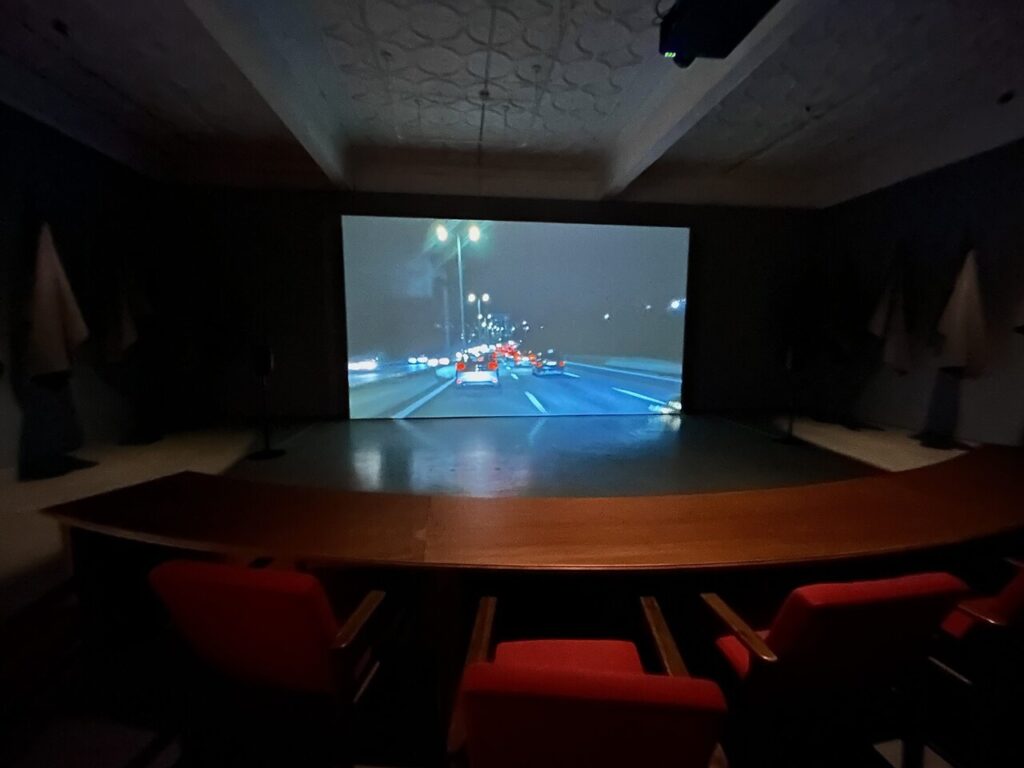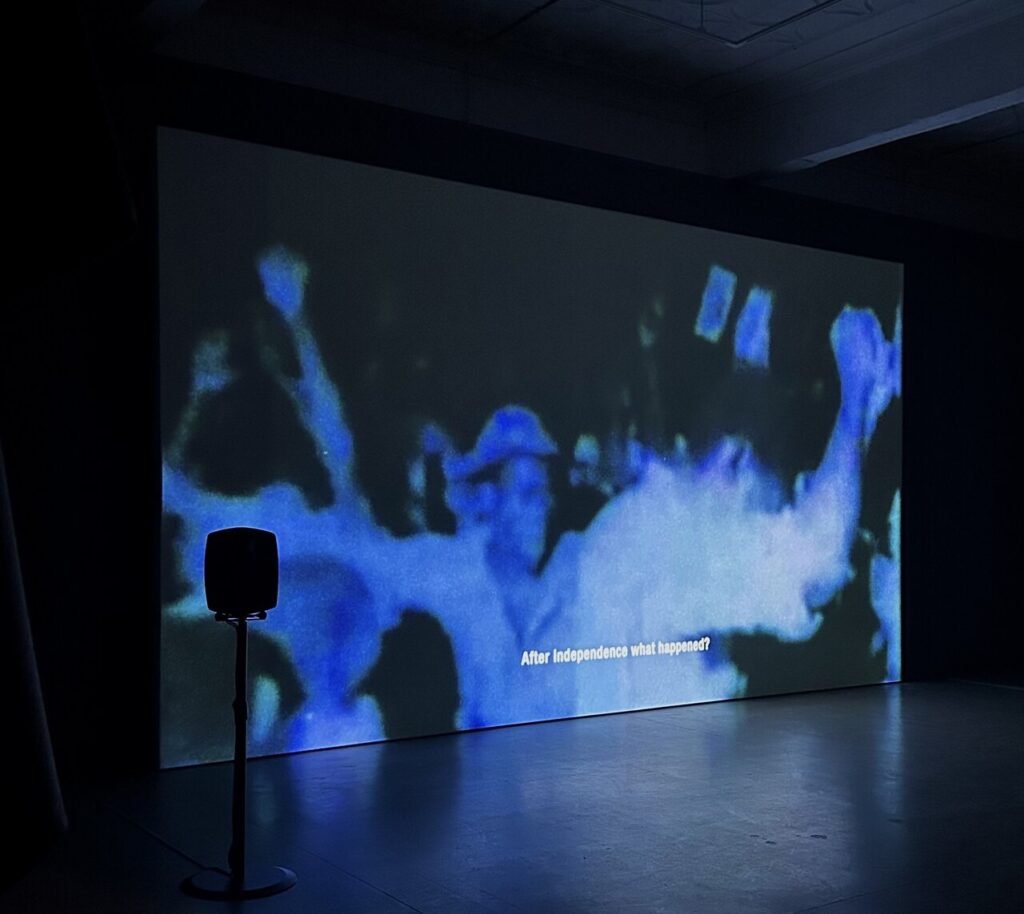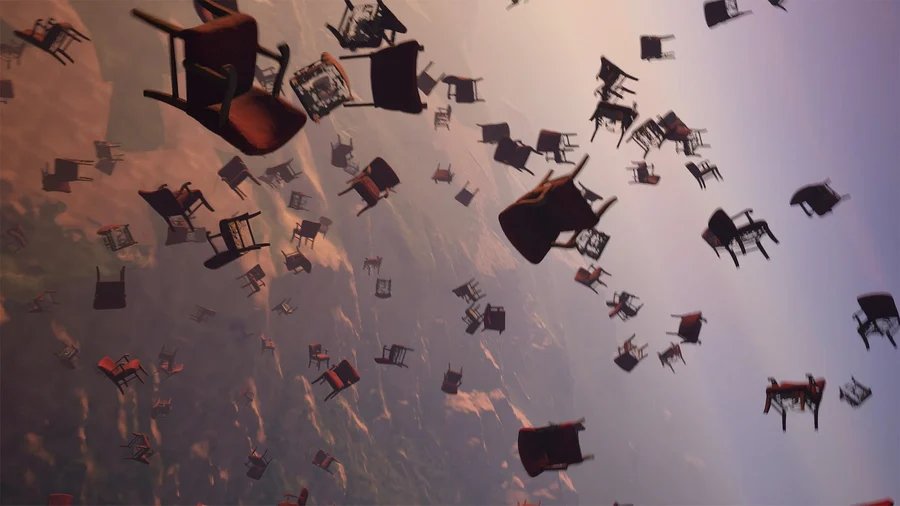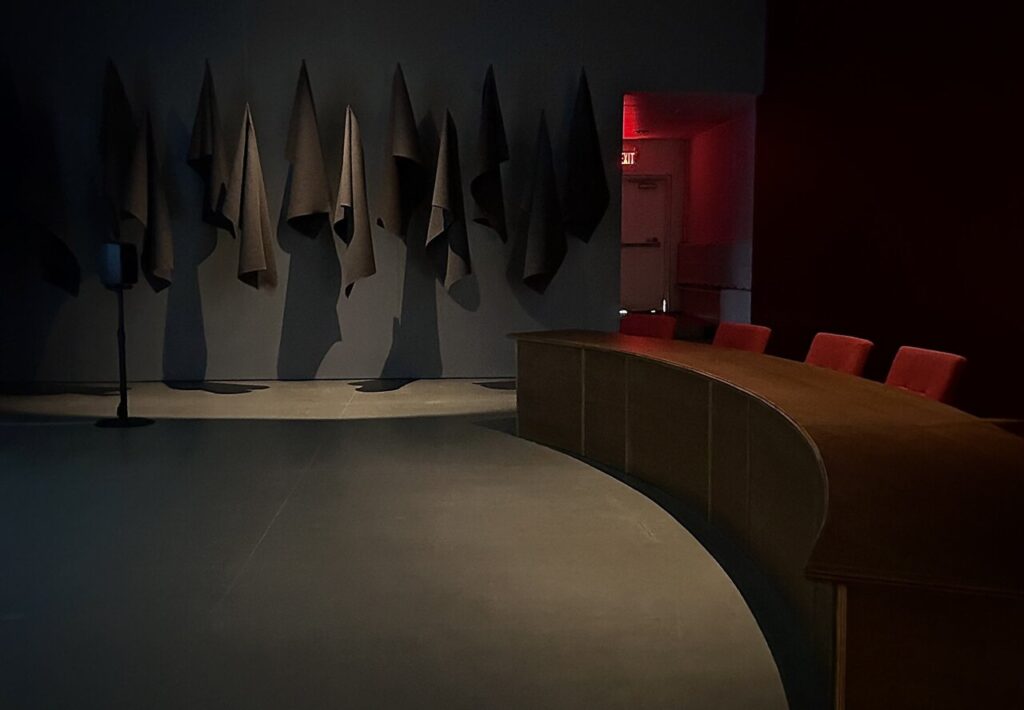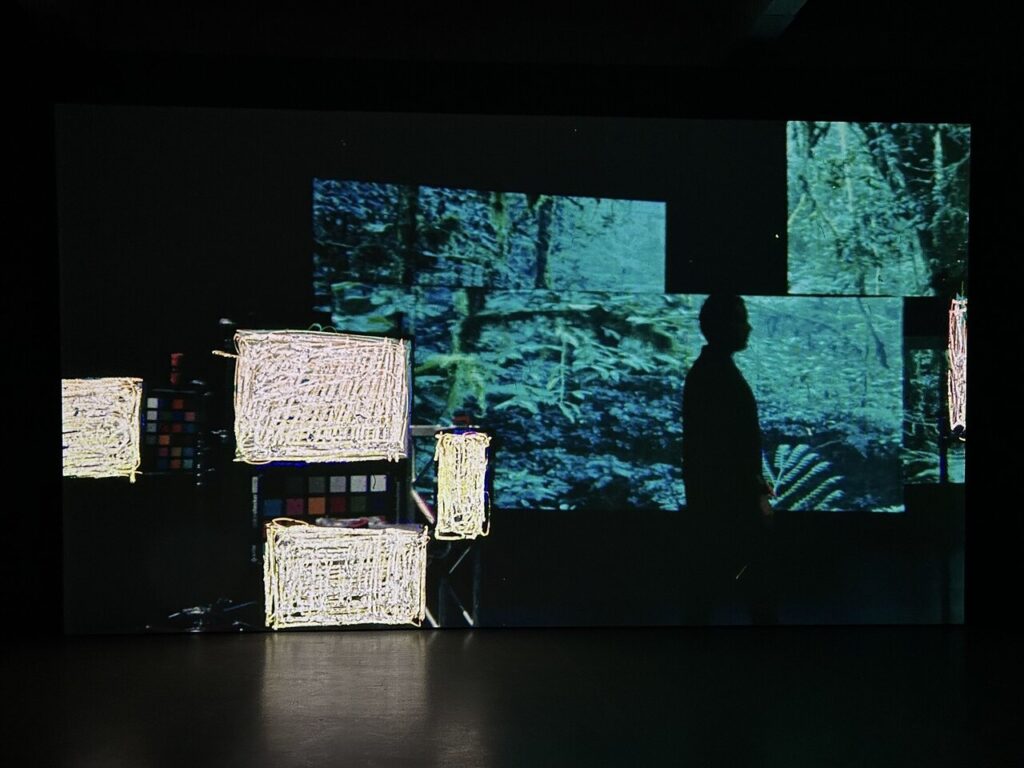An Impossible Address by Suneil Sanzgiri at Mercer Union is a powerful and intimate film that narrates the struggles of colonial liberation in Goa, Angola and Mozambique. It is an extremely touching and brooding film that was designed in such a way that visitors become truly entranced by it. This, in turn results in a dramatic, emotional experience that sends chills through one’s spine.
The film is composed as a series of letters to Sita Valles, a doctor and revolutionary, a woman of Goan origin who fought for the liberation of the Angolan people and was later killed by the post-independent Angolan government in 1977. Through these ‘letters,’ visitors learn of the turbulent times revolutionaries faced to gain freedom and what happened after they had achieved it.
Subtitles reads ‘After independence what happened?’
As one approaches the show room, the film’s audio grows stronger and stronger, until the moment visitors step into the dark, crisp room where they become enveloped in the environment Sanzgiri has created. In front of the projected film stands a wooden table with red chairs to seat while watching the movie. As the video approaches its apogee, a series of images start to become familiar to viewers, even if they have no prior knowledge of Mozambique, Goa or Angola. The very chairs on which the public is seated are featured on the screen as well. Revealed to the viewer with a beautiful and staggering animation of red chairs free falling from the sky, and a scene from a political conference in which the table and chairs reappeared. Perhaps having the public be seated in these chairs is a way to encourage a sense of solidarity and empathy, not just with the individuals met on screen but with every person they encounter moving forth; it encourages kindness and compassion.
The audio was the most staggering and impactful experience for me; one could close their eyes and still feel the same level of emotion from the dialogue, music, the drumming, and the whole audio curation. The language the artist employs throughout the film is familiar and personal, but still, there is pain embedded into the piece that is palpable in the room. Framing the projection of the video, there are 29 acoustic felt sound blankets that are representative of the 29 flags that were present at the Bandung Conference in 1955. The absence of any iconography of the flags gives the floating fabrics a phantom essence. It is hard to ignore the presence of ghost-like figures in the room, from the ghostly flags to the conversations with those who were taken from us, and the phantoms of a hope for freedom.
Finally, as the credits start to roll in, one may appreciate that this striking work is the result of the collaboration of many, in a winsome way resembling the revolutionary movements that were represented. The words of the Chilean song for revolution “El pueblo unido jamás será vencido” (The people united will never be defeated) is one of the reverberating messages that I was left with as the show came to an end. What does it mean for pieces like this to be created in our modern world? Pieces that talk about revolutions that happened around 50 years ago, what can we learn from these memoirs? In a walkthrough of the exhibition the artist mentions of the process of working with film, he says that “there is no guarantee when working with film that the image you are seeking to create ends up being the image that results.” Sanzgiri relates this artistic process to that of political struggle, “how one fights for a world that they may never see.” In the context of An Impossible Address, I find it is crucial to not let the memory of those who fought before us die, and to not allow those freedom fighters to have died and worked in vain. Films like Sanzgiri’s become essential because with conscience and reflection we may avoid making the same mistakes that were made in the past.
Text and photo: Sofia Diaz Aguilar
Images are stills from An Impossible Address a film by Suneil Sanzgiri.
*Exhibition information: Suneil Sanzgiri, An Impossible Address, April 12 – June 14, 2025, Mercer Union, 1286 Bloor Street West, Toronto. Gallery hours: Tuesday – Saturday, 11am – 6 pm.

